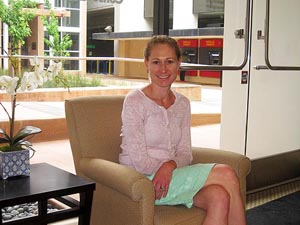UM Corner – Care Transitions
Supplemented by the Safety Net Innovations grant that Community Health Center Network (CHCN) was awarded by the Blue Shield of California Foundation, we are in the early stages of implementing our Care Transitions program at our highest utilized hospitals, Highland Hospital and the Sutter campuses – Summit and Alta Bates. Care Transitions is a new program instituted to improve care coordination for patients being discharged from hospitals back to their primary care provider. We hope that by facilitating a smooth transition from an acute care setting back to the health center we can improve the patients’ overall health and reduce the readmission rate to hospitals and emergency care.
CHCN currently has three case managers that have regularly scheduled time at each of the hospitals. These onsite case managers work in coordination with the hospital Utilization Management (UM) and Social Work departments to review patient stays as well as provide care management to help patients safely discharge from the hospital and connect with primary care at the clinic. CHCN’s Care Management Department not only consists of the case managers who work at the hospitals, but also has a case manager assigned to skilled nursing facilities (SNFs), and a nurse that does telephonic UM and care management with a number of surrounding hospitals.
CHCN has been collaborating with the clinics to create an efficient system to communicate important information about patients who have been hospitalized. Each clinic has identified, or is working to identify, a Single Point of Contact (SPOC) that CHCN case managers can contact to connect patients with their primary care provider. The work between case managers and SPOCs include transmission of important hospital records, scheduling appointments, arranging transportation to appointments, reinforcing hospital teaching about new health regiments and identifying symptoms signaling when a call to the provider is necessary. We hope to see more patients utilizing their benefits at the clinics – more appointments, fewer missed appointments, and improved adherence to treatments. This bridging from hospital to clinic gives clinic staff and practitioners what they need to provide improved care.
By creating a strong case management workflow between the hospitals, CHCN, and the clinics, we will be better prepared to engage in the changes necessary for the rollout of the Affordable Care Act. Care coordination translates not only to improved patient care but also will help our health centers meet requirements for Patient-Centered Health Home recognition and Meaningful Use incentive payments.
